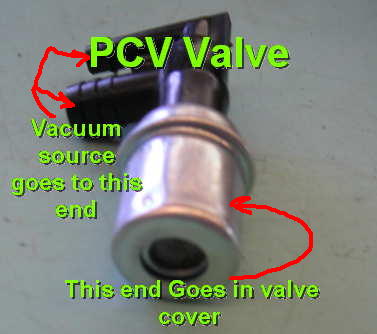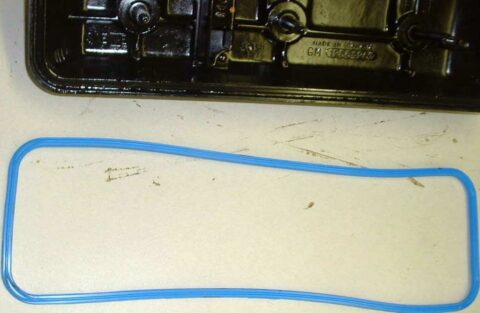A TrustMyMechanic fan contacted me recently about his valve cover gaskets. He had already replaced them THREE times over the last two years, and they are leaking again. Talk about frustrating! What he didn’t realize, and what I’d like to explain here, is that the leaking gaskets are probably not his problem…just a symptom of what is really going on that needs to be dealt with.
Valve Cover Gasket Seepage
The first thing that I advised him to do is to determine if he has a “seep†or a “leak†of oil. If the car has what we call a seep, you will notice a slow seepage of oil over time that isn’t enough at one time to actually produce a drop. You usually won’t find any spill areas on your driveway, and the oil level won’t really fluctuate between oil changes. What you will notice is a burning odor or even smoke as the oil seepage gets on hot engine or exhaust parts. An oil seepage is usually a problem that doesn’t require an immediate repair.
Almost every car that has been driven over 30,000 miles can experience some oil seepage as normal wear and tear. As the oil gets dirt and dust stuck to it, it will get more obvious, but isn’t necessarily the sign of a problem. I just took a look at both cars in my driveway, and both have signs of seepage around the valve cover gaskets. These automobiles have less than 40,000 miles on them and don’t have any problems that would indicate I need to replace the gaskets.
Of course, if I were to take either vehicle in for other repairs, the service manager would probably draw my attention to this seepage and advise me to replace my valve covers. It’s an add-on item for his bill, and he’s not incorrect or being dishonest in saying that my valve cover gaskets are “leaking.†But if the car isn’t showing any of the signs of true leaking we just went over, I wouldn’t go through the expense of having them replaced.
For higher mileage cars, I would advise that you monitor your valve cover gaskets a little more often and be sure to follow the recommended preventative maintenance for your car. Should you notice a problem or the beginnings of a true leak, replace the gaskets.
Additionally, if your car has a V6 or V8 engine, the valve covers sit at an angle. This design causes the oil to pool at the bottom of the valve cover. Any oil that seeps or leaks from this area is going to heat up from the exhaust system directly below it and cause a burning oil and possibly smoke.
On the other hand, a true leak will produce noticeable signs of dripping oil on the pavement where the car is parked. The leak will continue to drip oil while you are driving the car, which can cause a burning odor and possibly smoke, and if it isn’t attended to, can cause your oil levels to drop low enough to damage the engine. An oil leak should be corrected as soon as possible, and make sure to watch your oil level carefully until it can be repaired.
Valve Cover Gasket Leaks
So if this gentleman’s car has a true oil leak at his valve cover, let’s help him figure out what is causing it. The valve covers are on the top of the engine and provide protection for the valves and rocker arms. The gasket resembles an egg carton and is made of rubber or cork.
As the engine runs, oil is pumped to the top of the engine to lubricate the valve train, and it pools in the valve covers. The oil drips back inside the engine slowly through the drain-back holes in the cylinder heads. Then the oil is pumped back to the top of the engine again.
If you don’t keep your oil changed frequently, the sludge buildup in your oil can restrict the drain-back holes and drastically slow the draining process. This thicker excess oil will pool in the valve cover for longer periods of time and can create extra pressure on the valve cover gaskets. The Positive Crankcase Ventilation (PCV) valve’s job is to help relieve some of this pressure.

The PCV valve is built into the valve cover and vents excess pressure just like the valve on top of a pressure cooker. As pressure builds, it starts shaking back and forth allowing small amounts of steam to escape slowly and safely. Should your PCV valve become restricted, the pressure can cause a blown out oil gasket or seal.
PCV valves should be replaced as recommended, following the suggested maintenance schedule for your car. This is a critical safety component protecting your engine, and is inexpensive and easy to replace. A reputable shop will replace these valves as standard practice during a tune-up, and they should also be inspected for restrictions during all maintenance visits.
I hope this quick synopsis of oil seepage and leaks has been helpful. Hopefully most of you can rest assured that your car is fine, and if it does start showing signs of a true problem, you will be able to recognize it and correct it quickly.
Blessings,
Austin Davis
